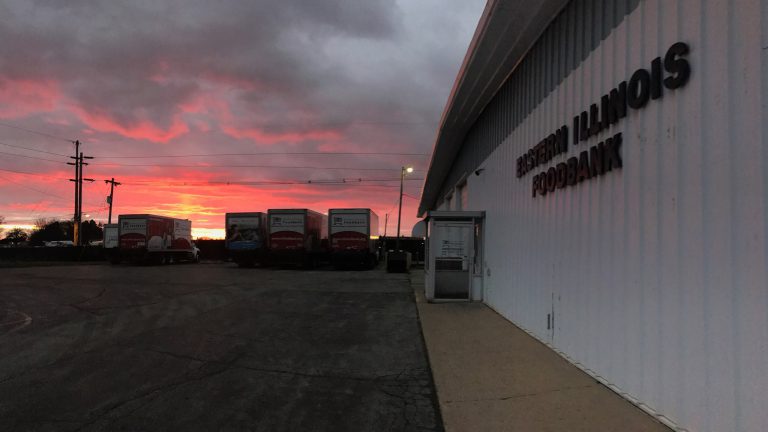URBANA – Since March, Eastern Illinois Foodbank has distributed almost nine million pounds of food. At this point last year, that number was just over seven million pounds. And demand isn’t slowing down.
“The volume of food that we’ve been putting out has definitely changed because of the pandemic,” says Molly Delaney, Vice President of Development at Eastern Illinois Foodbank.
The coronavirus pandemic has caused rates of food insecurity across the country to skyrocket due to loss of employment, decreased access to school meals and other financial stressors. Researchers at Northwestern University estimate rates of food insecurity have more than doubled since the start of the pandemic due to the ensuing economic crisis. According to their research, nearly one in four American households have struggled to afford food at some point this year.
The rise in hunger has driven many families to their local food pantries, which have had to step up to meet demand. Food banks, which often distribute food to local pantries, have in turn had to increase their output.
“We’ve been dramatically impacted by the pandemic,” Delaney says.
In addition to the mass increase in food distribution, the food bank has had to entirely change the way they operate. Early on in the pandemic, Eastern Illinois Foodbank made the decision to convert all their distributions to a drive-through model to avoid congregating indoors for safety reasons. With the cold weather front moving in, Delaney says she worries that could impact their drive-through operations.
“There are some unknowns still out there, so definitely this holiday season or the colder weather approaching definitely will impact what we do and how we do it,” she says.
She doesn’t, however, anticipate a huge spike in demand leading up to the holidays.
“Really for us, the holidays are not the busiest season,” she says. “Everybody kind of thinks that because I think it’s on everybody’s minds, you know, as you sit down to your Thanksgiving table, you certainly are thinking about people who might not have the same blessings that you have.”
Instead, the spike typically comes during the summer, when families lose access to school meals. But with schools largely moving to a remote format this year, Delaney says the increased demand has been consistent.
“Obviously that’s all been turned on its head because of the pandemic,” she says. “We’re seeing across the board increased need, that is because of the times we’re living in right now.”
More than 1.2 million Illinoisans are food insecure according to Feeding America’s Map the Meal Gap. In Eastern Illinois Foodbank’s 18-county area, the overall food insecurity rate is 10.7%. However, not all counties’ rates are the same. Champaign County, for example, has a food insecurity rate of 11%, while Coles County’s is 13.2%.
Delaney says she’s also seen disparities between counties in terms of new clients this year. In Champaign County, she says they’ve seen approximately 15% more new clients this year. In Coles County, however, that number is closer to 33%.
With the increased demand, Delaney says their priority has been and continues to be keeping everyone safe, including clients and staff members. Earlier this month, two food bank staff members tested positive for the coronavirus. According to a press release, Champaign-Urbana Public Health conducted contact tracing among exposed individuals and the affected areas within the food bank were cleaned and sanitized upon notice of the positive cases.
According to Delaney, the positive cases haven’t affected operations.
“We’ve certainly faced challenges and we’ve had to adapt our practices along the way,” Delaney says. “But we’re still getting food out to folks and it’s still business as usual for us.”
Follow Dana on Twitter: @DanaHCronin

